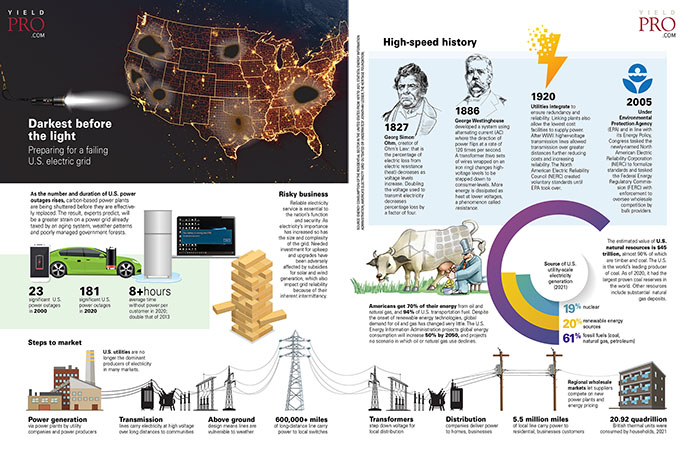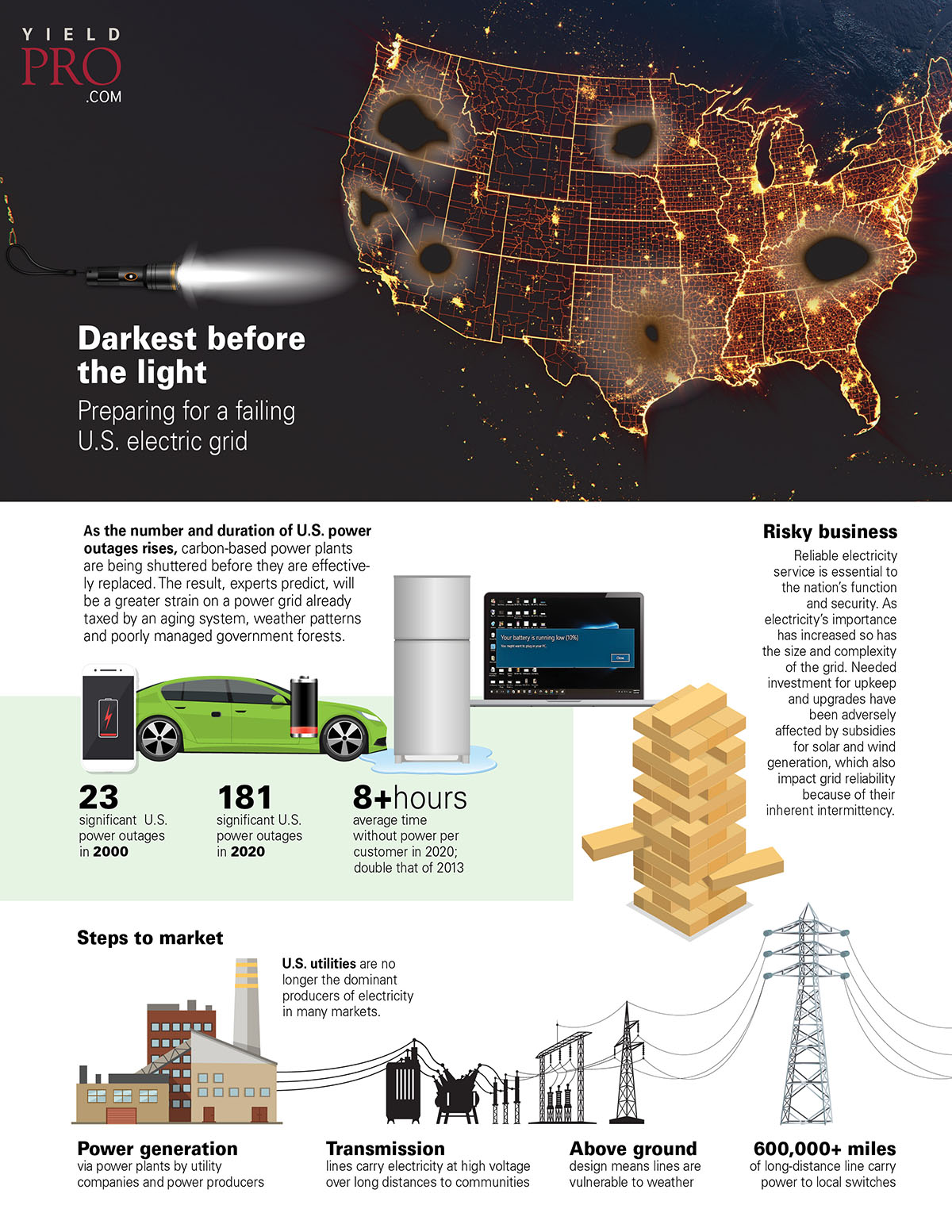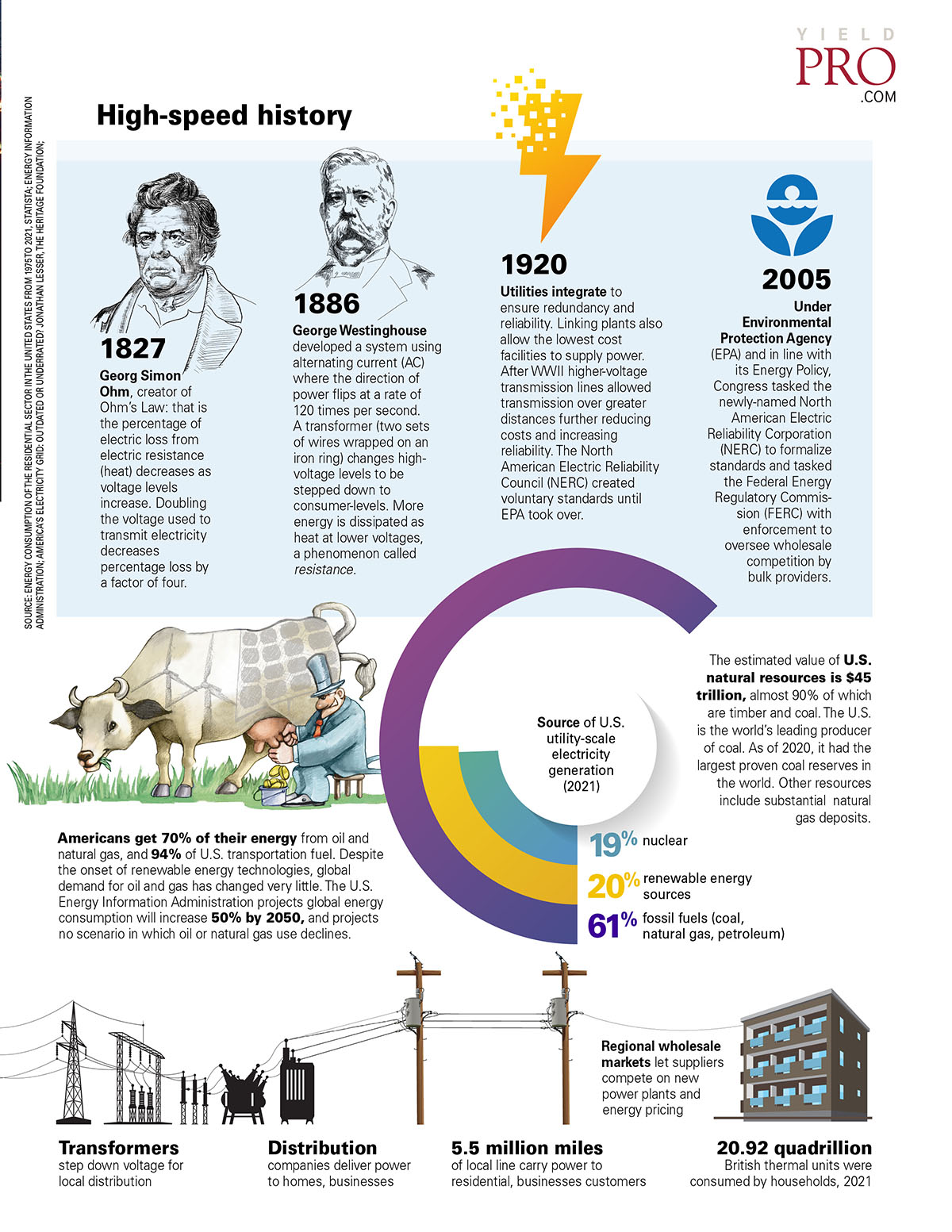Darkest before the light: Preparing for a failing U.S. electric grid
As the number and duration of U.S. power outages rises, carbon-based power plants are being shuttered before they are effectively replaced. The result, experts predict, will be a greater strain on a power grid already taxed by an aging system, weather patterns and poorly managed government forests.
- 23 significant U.S. power outages in 2000
- 181 significant U.S. power outages in 2020
- 8+hours average time without power per customer in 2020; double that of 2013
Risky business
Reliable electricity service is essential to the nation’s function and security. As electricity’s importance has increased so has the size and complexity of the grid. Needed investment for upkeep and upgrades have been adversely affected by subsidies for solar and wind generation, which also impact grid reliability because of their inherent intermittency.
Steps to market
- U.S. utilities are no longer the dominant producers of electricity in many markets.
- Power generation via power plants by utility companies and power producers
- Transmission lines carry electricity at high voltage over long distances to communities
- Above ground design means lines are vulnerable to weather
- 600,000+ miles of long-distance line carry power to local switches
- Transformers step down voltage for local distribution
- Distribution companies deliver power to homes, businesses
- 5.5 million miles of local line carry power to residential, businesses customers
- 20.92 quadrillion British thermal units were consumed by households, 2021
High-speed history
- 1827 Georg Simon Ohm, creator of Ohm’s Law: that is the percentage of electric loss from electric resistance (heat) decreases as voltage levels increase. Doubling the voltage used to transmit electricity decreases percentage loss by a factor of four.
- 1886 George Westinghouse developed a system using alternating current (AC) where the direction of power flips at a rate of 120 times per second. A transformer (two sets of wires wrapped on an iron ring) changes high- voltage levels to be stepped down to consumer-levels. More energy is dissipated as heat at lower voltages, a phenomenon called resistance.
- 1920 Utilities integrate to ensure redundancy and reliability. Linking plants also allow the lowest cost facilities to supply power. After WWII higher-voltage transmission lines allowed transmission over greater distances further reducing costs and increasing reliability. The North American Electric Reliability Council (NERC) created voluntary standards until EPA took over.
- 2005 Under Environmental Protection Agency (EPA) and in line with its Energy Policy, Congress tasked the newly-named North American Electric Reliability Corporation (NERC) to formalize standards and tasked the Federal Energy Regulatory Commission (FERC) with enforcement to oversee wholesale competition by bulk providers.
Americans get 70 percent of their energy from oil and natural gas, and 94 percent of U.S. transportation fuel. Despite the onset of renewable energy technologies, global demand for oil and gas has changed very little. The U.S. Energy Information Administration projects global energy consumption will increase 50 percent by 2050, and projects no scenario in which oil or natural gas use declines.
Source of U.S. utility-scale electricity generation (2021)
- 19% Nuclear
- 20% renewable energy sources
- 61% Fossil fuels (coal, natural gas, petroleum)
The estimated value of U.S. natural resources is $45 trillion, almost 90 percent of which are timber and coal. The U.S. is the world’s leading producer of coal. As of 2020, it had the largest proven coal reserves in the world. Other resources include substantial natural gas deposits.

















